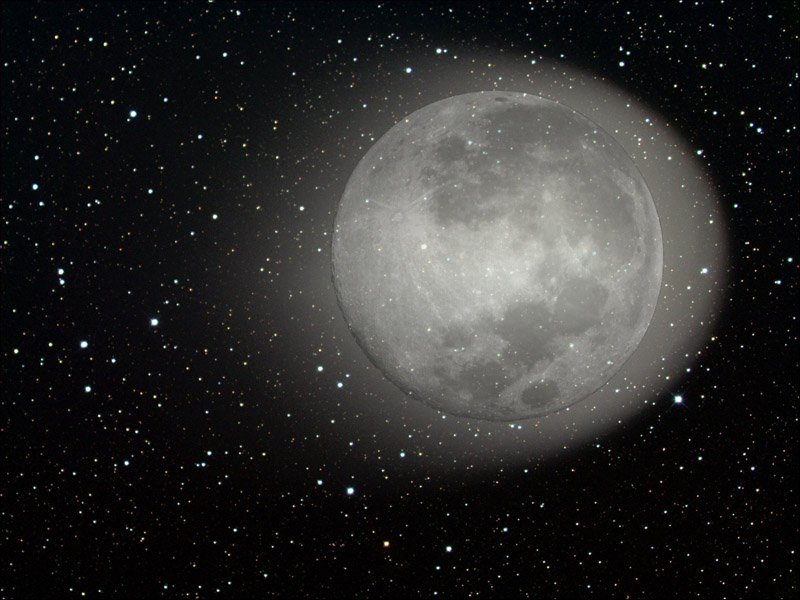
images by Brian Kimball, Longmont, Colorado
The Moon is usually the largest object in the universe that you can easily observe. By large I mean in apparent diameter. But Comet Holmes, still gracing evening skies, was bigger when it and the Moon were photographed with the same scope late last month. These two superposed images give an otherworldly look to our familiar Moon. With the Moon’s opacity set at less than 100% the background stars shine through like bright impact craters. And we can fantasize that this could be the Moon soon after a large comet impact emplanted a large temporary atmosphere that is already being lost to space. But we know that the atmosphere in the shadowed craters at the poles condenses out, with snow falling into the ever-dark crater floors. Some condenses onto the remains of Gene Shoemaker and the Lunar Prospector that carried his ashes into the crater now known by his name. Shoemaker is the first man in the Moon.
Technical Details:
Takahashi Epsilon E180 astrograph and SBIG ST2000XM ccd camera. The moon image was taken on Nov. 24th and the comet was taken on Nov. 26th, 2007.
Get ready for Christmas giving and support LPOD when you buy ANYTHING from Amazon thru LPOD!
COMMENTS?
Click on this icon File:PostIcon.jpg at the upper right to post a comment.



